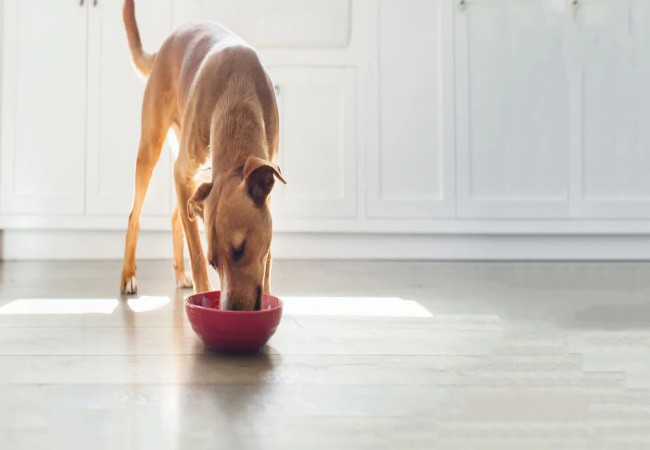Feeding Your Dog the Right Amount 2025: Vet Approved Guide 🐶🍽️

In this article
Feeding Your Dog the Right Amount 2025: Vet Approved Guide 🐶🍽️
By Dr. Duncan Houston BVSc
📌 Why Portion Control Matters
Feeding the right amount of food helps maintain your dog’s ideal weight and overall health. Too much leads to obesity—risking conditions like diabetes, arthritis, heart disease, shortened lifespan, even cancer—while too little causes malnutrition, lethargy, poor coat health, GI issues, and impaired immunity.
🎯 Key Factors That Influence How Much to Feed
- Age / Life Stage: Puppies need more calories, protein, and vitamins than adults; seniors may need fewer calories with added joint support.
- Size & Breed: Larger dogs eat more in volume, though smaller breeds require more calorie-dense food per ounce.
- Activity Level: Active or working dogs burn more energy, needing up to 50 % more calories compared to couch potatoes.
- Reproductive Status: Intact dogs burn more energy, while spayed/neutered dogs have slightly lower calorie needs.
- Body Condition Score: Adjust feeding based on ideal weight targets—not current weight—for overweight or underweight dogs.
- Calorie Density of Food: High‑calorie, nutrient-dense diets may require smaller portions; always follow the food label first.
📊 Use Feeding Charts & Calculate Calorie Needs
Start with the feeding chart on your dog food packaging—it provides a daily recommended amount tailored to weight and life stage. Divide that number into appropriate meal portions (generally 2 per day for adults; 3–4 for puppies).
For precise needs, calculate **Resting Energy Requirement (RER)**:
RER = 30 × (weight in kg) + 70 kcal/day
Then apply an activity/life-stage multiplier (e.g., 1.2–1.4× for adults, up to 3× for working dogs or puppies).
⚖️ Adjusting Portions Over Time
- Measure food with an 8 oz standard cup or kitchen scale—eyeballing leads to overfeeding.
- Track body condition monthly using a scale of 1–9—aim for 4–5 ideal.
- Adjust portions by ±10–20 % if your dog gains or loses weight unexpectedly.
🕒 Meal Frequency & Timing
- Feed adult dogs twice daily—morning and evening—for digestive stability.
- Puppies under 6 months need 3–4 meals per day to support growth and prevent hypoglycemia.
- Consistency in meal times helps with house-training and behavior.
🍖 Treats & Extras
Treats should generally make up ≤ 10 % of the daily caloric intake to avoid unintended weight gain.
🏥 When to Consult Your Vet
- Unexplained weight changes despite portioning
- Chronic diarrhea, vomiting, or loss of appetite
- Medical conditions affecting metabolism or dietary needs
- Switching food types: consider life-stage formulas (puppy, adult, senior).
✅ Dr Houston’s Portion Control Toolkit
- 📋 Use food packaging chart & split into meals
- ⚖️ Weigh food with kitchen scale or measuring cup
- 📏 Calculate RER and adjust with activity multiplier
- 📝 Monitor weight and body condition monthly
- 🏃 Adjust portions ±10–20 % as needed
- 🍪 Limit treats to ≤10 % of total calories
- 📱 Ask A Vet available for personalized guidance anytime
🌟 Final Thoughts
Feeding the right amount is a dynamic process: start with label guidelines, fine-tune by life-stage and activity, measure meticulously, and monitor your dog’s body condition. With this approach, you support lifelong health, energy, and well-being. Always consult your vet or use Ask A Vet support for tailored feeding plans. 🐾🍲📱






